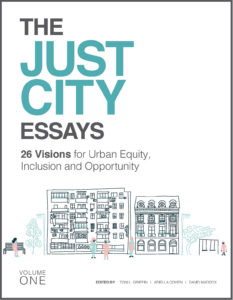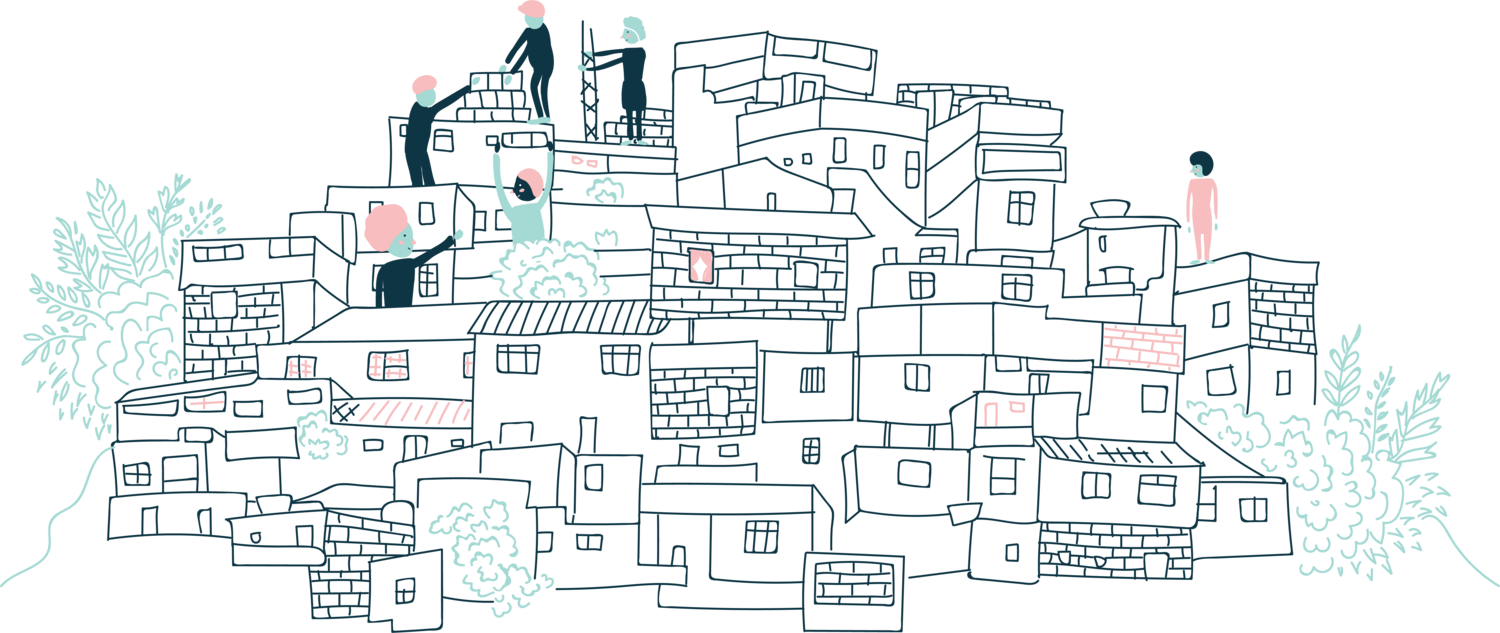“Five years ago, the Harvard Graduate School of Design’s Just City Lab published The Just City Essays: 26 Visions of Inclusion, Equity and Opportunity. The questions it posed were deceptively simple: What would a just city look like? And what could be the strategies to get there? These questions were posed to mayors, architects, artists, philanthropists, educators and journalists in 22 cities, who told stories of global injustice and their dreams for reparative and restorative justice in the city.
 These essays were meant as a provocation, a call to action. Now, during these times of dissonance, unrest, and uncertainty, their contents have become ever more important. For the next 26 weeks [starting June 15, 2020], the GSD and the Just City Lab will republish one essay a week here and at designforthejustcity.org. We hope they may continue conversations of our shared responsibility for the just city.
These essays were meant as a provocation, a call to action. Now, during these times of dissonance, unrest, and uncertainty, their contents have become ever more important. For the next 26 weeks [starting June 15, 2020], the GSD and the Just City Lab will republish one essay a week here and at designforthejustcity.org. We hope they may continue conversations of our shared responsibility for the just city.
We believe design can repair injustice. We believe design must restore justice, especially that produced by its own hand. We believe in justice for Black Americans. We believe in justice for all marginalized people. We believe in a Just City.”
—Toni L. Griffin, Professor in Practice of Urban Planning, founder of the Just City Lab, and editor of The Just City Essays
A Just City is Inconceivable Without a Just Society
By Marcelo Lopes de Souza
Once upon a time the city was called the “marvelous” one: Rio de Janeiro, cidade maravilhosa. Rio was the birthplace of samba, chorinho and bossa nova; internationally famous for supposedly being a city of fun and carnival 365 days a year, it has been the capital city of Brazilian proverbial optimism. Austrian novelist, playwright and biographer Stefan Zweig regarded it as the symbol and epitome of the whole of Brazil in his book Brazil, Land of the Future, published in 1941. Sure, it was as an idealization, some would say an ideological invention. After all, there were dictatorships (between 1937 and 1945 and again between 1964 and 1985) and their cortege of atrocities; there were huge socio-economic disparities; and so on. But the idea of a “marvelous city” seemed at least plausible. No ideology survives if there is not at least a grain of truth in it.
But then, things began to change.
The poor became less and less “patient” and “tolerant” with what they began to realize as injustice and not simply as fate. The magic powers of soccer and carnival became less effective; not only because “the people” (o povo) were politically more conscious, more demanding and less submissive now, but also because they could no longer be tamed by an increasingly commercial and elitist carnival and an increasingly corrupt soccer.
It happened a week ago. A sunny Saturday, the Copacabana beach full of people having fun—flirting, playing, drinking coconut juice—or just resting after a week of hard work. Suddenly, a scream of despair was heard. More people screaming, many of them began to run or were simply paralyzed. Dozens of teenagers from neighboring favelas or even from the distant periphery were robbing and stealing. If one resists, one can be beaten at the moment. Everything occurs very quickly, is a matter of a few minutes; the police were unprepared and taken by surprise (the police are almost always unprepared, unless it is organizing its own corruption schemes). Panicked beach-goers ask for help, some people cry in despair, some try to escape (leaving some of their belongings behind).
It happened last Saturday, but the phenomenon known as arrastão (literally “dragnet”) had already occurred many times in Rio since the 1990s.
Who are the victims? Who is to blame? Is there a simple answer for these questions? Continue reading on designforthejustcity.org…
